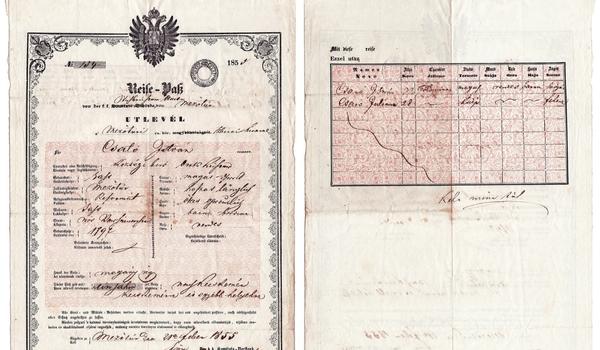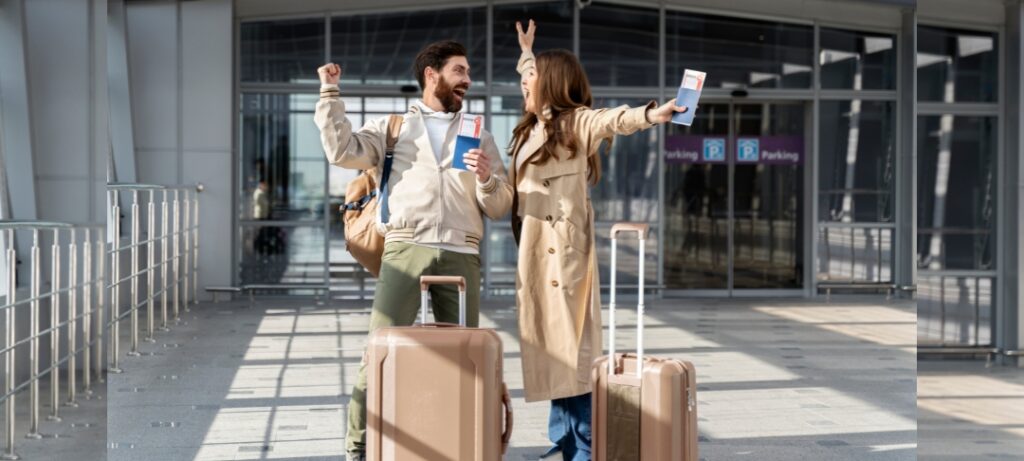The topic of flying with a picture of your ID is becoming increasingly relevant as technology advances and more people rely on their smartphones and other digital devices for everyday tasks. Many people may wonder if it’s possible to fly with just a picture of your ID on your phone, rather than carrying a physical ID card. The purpose of this blog post is to explore the answer to this question and provide information on what types of identification are accepted for air travel, what forms of ID are acceptable, and the potential risks and benefits of using a picture of your ID.
Types of identification accepted for air travel
When it comes to air travel, there are several types of identification that are accepted by airlines and the Transportation Security Administration (TSA). The most common form of identification is a passport, which is accepted by all airlines and is valid for international travel. Another commonly accepted form of identification is a driver’s license, which is accepted by all airlines and is valid for domestic travel.
Other forms of state-issued identification, such as a state ID card, are also accepted by airlines and the TSA, but the acceptance of these IDs may vary by state and airline. Additionally, there are several Trusted Traveler programs that are accepted by the TSA, including TSA PreCheck, Global Entry, NEXUS, and SENTRI. Military ID cards are also accepted by the TSA and airlines, as are Permanent Resident Cards.
Acceptable forms of identification
When it comes to identifying yourself at the airport, there are several forms of identification that are acceptable. The most common form of identification is the original physical ID card, such as a passport or driver’s license. These types of IDs are typically accepted as long as they are valid and not expired.
In addition to physical IDs, digital or scanned copies of IDs are also acceptable. This can include a photo of your ID on your phone or a digital copy stored on your computer. Some airlines also accept mobile boarding passes as a form of identification.
Reasons why a picture of your ID may not be accepted
Despite the convenience of having a picture of your ID on your phone, there are several reasons why this may not be accepted as a valid form of identification. One of the main reasons is that a picture of your ID may lack the security features of a physical ID card. This makes it more difficult for TSA agents and airline staff to verify your identity and can increase the risk of fraud or identity theft.
Another reason why a picture of your ID may not be accepted is that it can be difficult to verify the authenticity of a photo. This is especially true if the photo has been cropped or edited in any way. Additionally, the quality of the photo may not be good enough for TSA agents or airline staff to clearly read the information on the ID.
How to ensure your picture of ID will be accepted
If you want to use a picture of your ID to fly, there are several steps you can take to ensure that it will be accepted. The first step is to make sure that the photo is clear and legible. This means that the text and images on the ID should be easy to read and not blurry or pixelated.
Another important step is to avoid cropping or editing the ID in any way. This can make it more difficult for TSA agents and airline staff to verify your identity and can increase the risk of fraud or identity theft.
Lastly, it is important to use a reputable and secure method of storing and sharing the ID. For example, storing the ID in a password-protected app or file on your phone or computer can help protect it from unauthorized access.
How to fly without an ID
In some cases, you may find yourself in a situation where you do not have a valid form of identification when it’s time to fly. If this happens, there are a few options that you can consider.
One option is the TSA’s “Identification Verification” process, which allows travelers without valid identification to provide additional information to TSA agents in order to verify their identity. This can include providing a passport number, address, or other personal information. However, it’s important to note that this process can take longer and may result in additional security screenings.
Another option is traveling with a companion who has a valid form of identification. This person can vouch for your identity and provide additional information to TSA agents if needed.
If you have lost or misplaced your ID, you can apply for a replacement ID from your state’s Department of Motor Vehicles (DMV) or the agency that issued your ID. You can also apply for a TSA-approved ID, such as a TSA Secure Flight ID, which can be used for air travel in the US.
Lastly, you may consider traveling with a temporary ID. This can be a photo ID that is issued by the airline or a form of identification issued by a government agency that can be used for a limited period of time.
Pros and cons of using a picture of your ID
Using a picture of your ID has its own pros and cons. One of the main pros is convenience, as it eliminates the need to carry a physical ID card and allows you to quickly access your ID on your phone or computer. Additionally, a picture of your ID can be more accessible, as you can easily share it with TSA agents or airline staff.
On the other hand, one of the cons of using a picture of your ID is security. It can be more difficult to verify the authenticity of a picture, which can increase the risk of fraud or identity theft. Additionally, a picture of your ID may lack the security features of a physical ID card, which can make it more difficult for TSA agents and airline staff to verify your identity.
Alternatives to using a picture of your ID

In recent years, new technologies have been developed to improve the identification process for air travel. These include biometric identification, such as fingerprint or facial recognition, and digital ID systems.
Biometric identification can provide a more secure and efficient way to verify your identity, as it uses unique physical characteristics to confirm your identity. Digital ID systems, such as mobile ID apps, allow you to store and share your ID electronically and can be used in place of a physical ID card.
How airlines and TSA are addressing the issue
Airlines and TSA have implemented several measures to address the issue of identity verification for air travel. The TSA has an Identity Verification Call Center that travelers can call if they have questions about the identification process or need to verify their identity.
The TSA also has a Secure Flight program that allows passengers to provide personal information in advance of their flight, which can help speed up the identification process at the airport.
Airlines also have their own policies and procedures in place for identifying passengers, and some airlines are experimenting with new technologies such as biometric identification.
Lastly, the TSA has implemented the “Real ID” program, which establishes new standards for state-issued driver’s licenses and ID cards to improve their security and make them more difficult to counterfeit.
International travel and identification requirements
When traveling internationally, it’s important to be aware of the identification requirements of the country you’re visiting. In general, a passport is the accepted form of identification for international travel, but some countries may also accept other forms of identification, such as a national ID card. It’s important to check the identification requirements of your destination country before you travel to ensure that you have the proper identification. Additionally, it’s worth double-checking if the country you’re visiting accepts digital or scanned copies of IDs, as some countries may not.
The future of identification for air travel
As technology continues to advance, it’s likely that the way we verify our identity for air travel will change. Biometric identification, such as fingerprint or facial recognition, is becoming more common in airports and is expected to become more widely used in the future. Additionally, digital ID systems, such as mobile ID apps, are being developed and may eventually replace physical ID cards. These new technologies can provide a more secure and efficient way to verify identity, but also raise concerns about privacy and data security.
The impact of COVID-19 on identification requirements for air travel
The COVID-19 pandemic has had a significant impact on air travel and the identification requirements for passengers. Many countries have implemented travel restrictions and quarantine requirements, and some airlines have implemented additional health screenings for passengers. In some cases, a negative COVID-19 test may be required for travel, and some airlines have implemented digital health pass systems for passengers to show proof of a negative test. Additionally, some airlines and airports have implemented contactless check-in procedures and digital boarding passes, to minimize contact and promote social distancing. These changes may become a permanent feature of air travel even after the pandemic ends and can affect the identification requirements for air travel in the future.
Conclusion
In summary, the answer to the question “Can you fly with a picture of your ID?” is that it depends on the airline and the TSA’s policies. While many airlines and the TSA do accept digital or scanned copies of IDs, it is important to note that they may not be as secure as physical IDs, and there is a risk of fraud or identity theft. However, it is possible to fly with a picture of your ID if you take the necessary precautions to ensure that the photo is clear and legible, avoid cropping or editing the ID, and use a reputable and secure method of storing and sharing the ID.
In addition, there are other options to consider if you find yourself without a valid form of identification when it’s time to fly. These include the TSA’s “Identification Verification” process, traveling with a companion who has a valid form of identification, and applying for a replacement ID or a TSA-approved ID. It’s also important to note that new technologies, such as biometric identification and digital ID systems, are being developed to improve the identification process for air travel.
Overall, it’s always best to have a valid and government-issued ID when traveling by air, but if you don’t have one, it’s still worth trying to fly with a picture of your ID and be prepared for additional security screenings and wait times. Additionally, it’s worth being informed about the policies and procedures of the airline and TSA in order to have a smooth travel experience.
